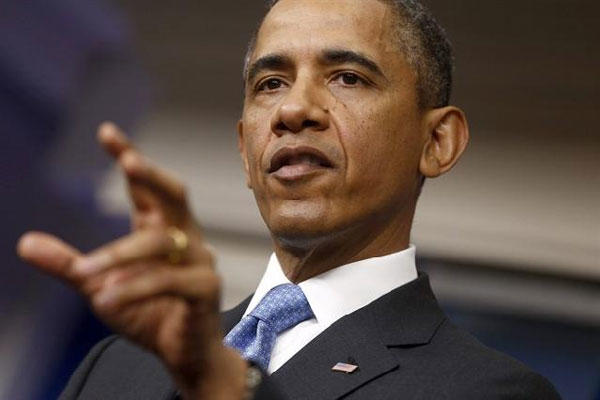The U.S. retains the “zero option” of leaving Afghanistan without a residual force of trainers and advisers following the withdrawal of combat troops at the end of 2014, White House and Pentagon officials said Tuesday.
“This decision at the end of the day is the president’s to make,” said Pentagon chief spokesman George Little, adding that “getting people out is something we’ve done in the past” -- a reference to Iraq.
“It’s of course an option,” White House Press Secretary Jay Carney said of the possibility that no U.S. troops would remain in Afghanistan after 2014, but he stressed that there was still time to work out a bilateral security agreement with Afghan President Hamid Karzai on a residual force post-2014.
A decision on the so-called zero option “is not imminent and doesn’t need to be imminent,” Carney said.
Carney and Little were responding to a New York Times report that President Barack Obama was becoming increasingly fed up with the complaints and anti-U.S. outbursts of Karzai and was giving more serious consideration to the possibility of removing all U.S. troops from the country.
Carney pointed out that the White House first floated the idea of the zero option last January, but the main focus of the U.S. has been on negotiations with Karzai on the size of the residual force that would remain.
Various proposals have surfaced, from a few thousand troops concentrated at the Bagram air base north of Kabul, to more than 20,000 troops at several bases.
The residual force, no matter its size, would be limited to training and advising Afghan troops, and targeting remnants of al-Qaida in Afghanistan, Little said.
However, Karzai angrily broke off negotiations on a residual force of U.S. and NATO troops last month, claiming he was blindsided by the U.S. attempts to open peace talks with a Taliban delegation in Doha, Qatar.
The Qatar talks also collapsed when the Taliban representatives showed up with the same white flag of the Islamic Emirate of Afghanistan that was flown during the five years they ruled before the 2001 invasion by the U.S.
Ambassador James Dobson, the new special U.S. envoy for Afghanistan and Pakistan, has been attempting to restart the talks without success.
The U.S. currently has about 64,000 troops in Afghanistan, and the planning by Marine Gen. Joseph Dunford, commander of NATO’s International Security Assistance Force, calls for the 64,000 to remain during the “fighting season” this summer and then be drawn down to about 34,000 by the end of 2013.
In his last conference call to the Pentagon in June from Kabul, Dunford said he was proceeding with planning for a post-2014 residual force and expected to give details on his recommendations for the size and placement of the force in the fall.
“With regard to why the president hasn't made a decision to date, I suppose it's because he wasn't ready to make a decision right now,” Dunford said. “And again, what I’ve told [Defense Secretary Chuck Hagel] is, I'm comfortable with having numbers in the fall -- works for me.”
Rep. Howard “Buck McKeon, R-Calif., chairman of the House Armed Services Committee, said administration officials told him Tuesday that there are no plans for the U.S. to completely withdraw from Afghanistan.
“I was assured that the United States has committed to post-2014 support to include troops on the ground,” he said in a statement. “I was further informed that a ‘zero option’ would violate American commitments to the Afghan people.
“News of the ‘zero option’ damages our position in Afghanistan, erodes our standing with our allies, emboldens the Taliban, and demoralizes our troops,” he added. “I call on the president to confirm the assurances of his senior officials and clarify his 'zero option' position.”




























